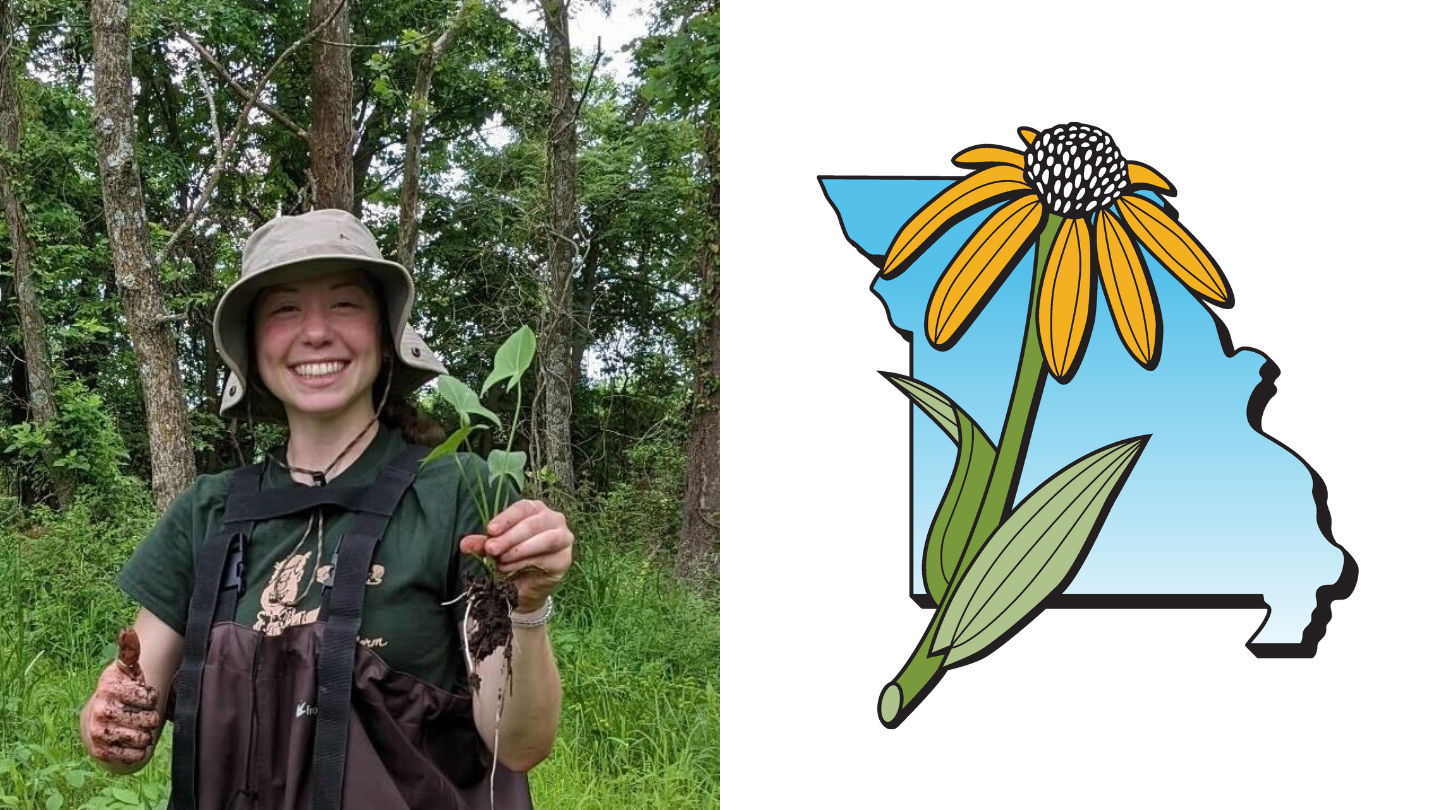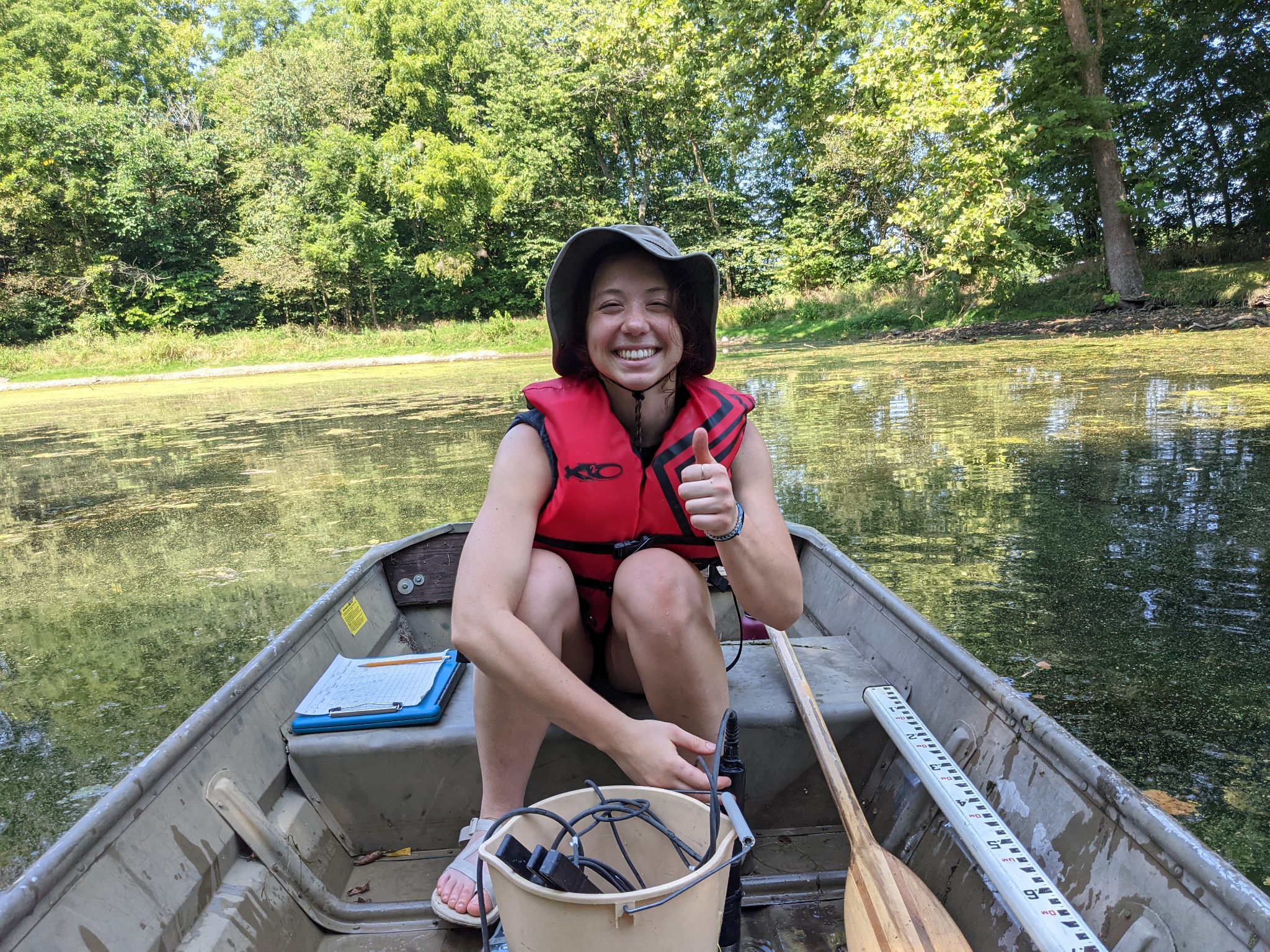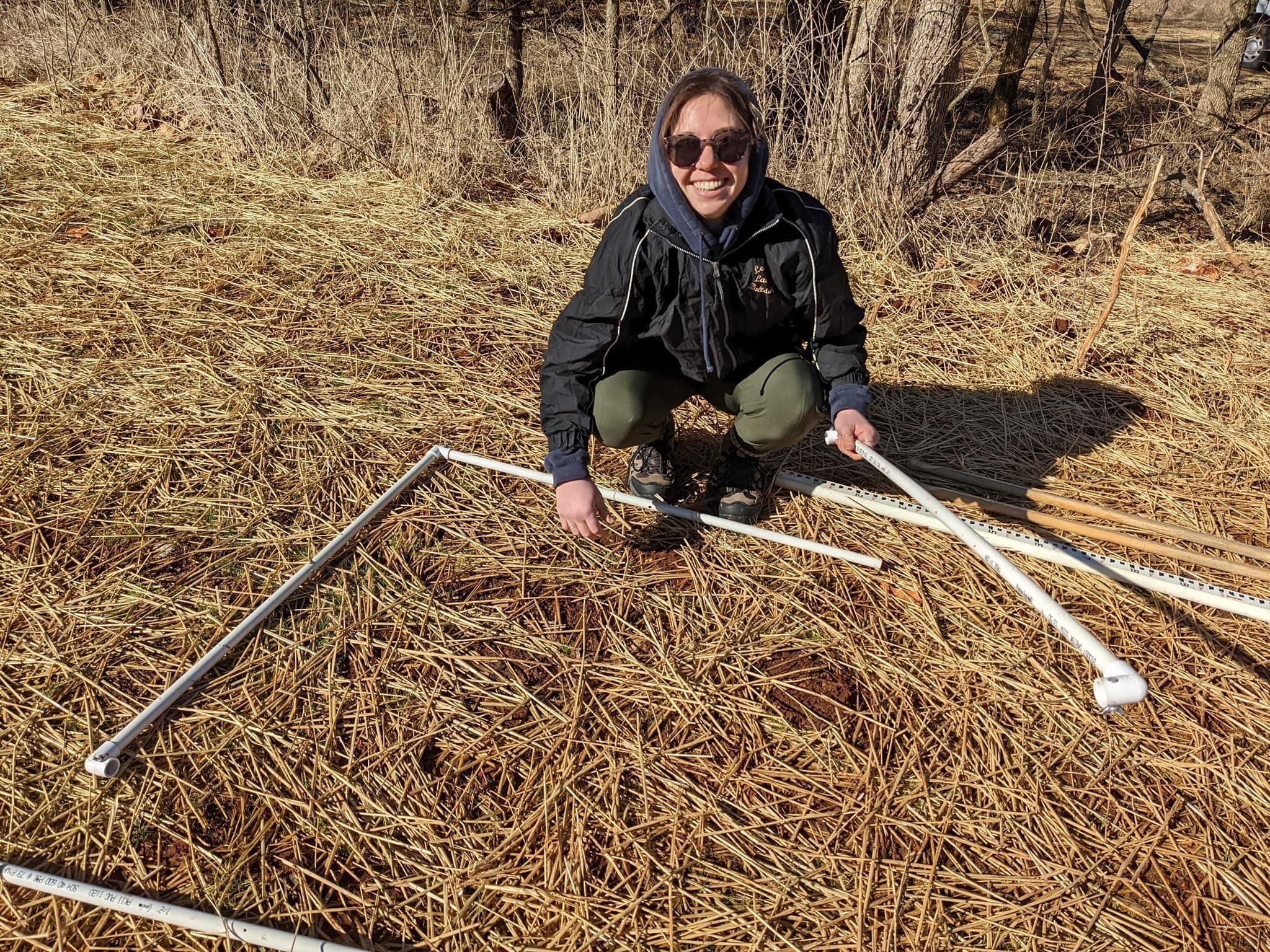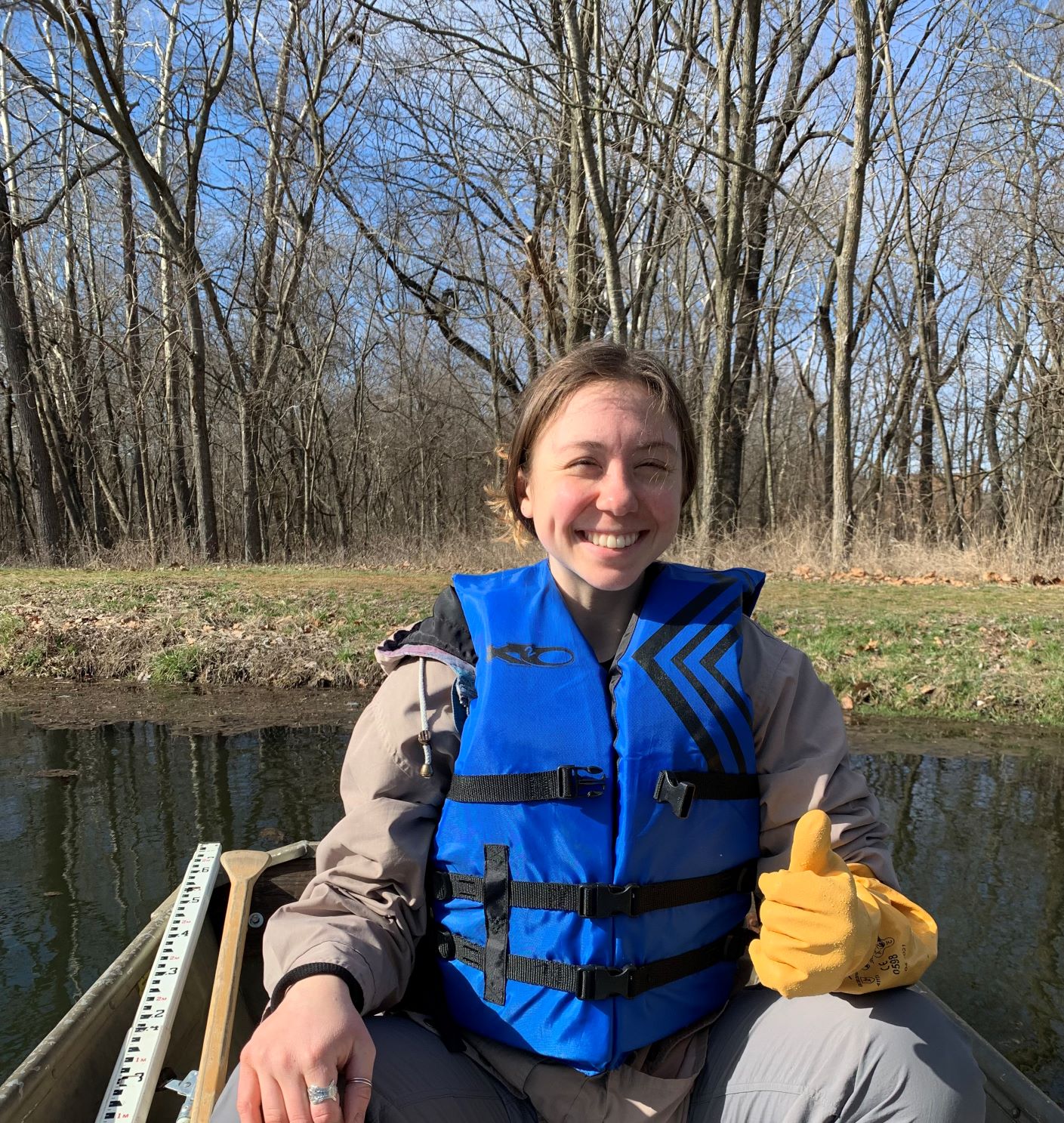Under the surface of some Missouri ponds, you can find a curly-leaf pondweed, also known as Potamogeton crispus, with leaves that are sometimes compared to lasagna noodles.
But they aren’t welcome there.
So how does an invasive species get by in an environment they were never originally a part of?
Daphne Miles, a 2023 recipient of the Stan Hudson Research Grant from the Missouri Native Plant Society, wants to answer this in her research.
An overstayed welcome
A senior undergraduate environmental and evolutional biology major with an emphasis in plant science, Miles has been spending her time completing her research project at William’s Pond, a spring-fed pond at George Washington Carver National Monument in Diamond, Missouri.
The project, titled “Potamogeton crispus: effects on native plants and response to changing environmental conditions in an Ozarks spring-fed pond,” has been a continuous adventure of associate biology professor Dr. La Toya Kissoon-Charles‘s Wetland and Biology Education Research (WeBER) lab for the last five years.
“My research focuses on assessing how the abundance of invasive aquatic plant Potamogeton crispus changes with native aquatic plant abundance, water depth and other environmental conditions over time,” Miles said. “The increased abundance of this plant is a cause for concern in this spring-fed pond because it could serve as a distribution point for the spread of this species in the Ozarks.”
Miles has been the lead aquatic plant surveyor for the lab while it progresses through this project.
“We’ve been monitoring and completing surveys at this beautiful spring-fed pond every three months to approximately capture seasonal changes in the plant community,” Miles said. “These consist of identifying aquatic plants present, estimating percent plant cover, carrying out water chemistry and depth measurements, and collecting water samples.”
Miles and the lab will monitor the pond as long as the National Park Services allows, but she hopes to pass the torch to another undergraduate in the coming years.
Granting more possibilities
Being one of two recipients of the Stan Hudson Research Grant has given much needed encouragement for Miles and the WeBER lab.
“Receiving this grant blew me away. I simply couldn’t believe it,” Miles said. “Our research lab works very hard to find funding for the projects we are working on. It was like the light at the end of the tunnel!”
After graduating and traveling abroad some, Miles plans to pursue further education while continuing her proposed project for the Hudson grant.
“I’m applying to graduate programs here and across the U.S., but I plan to attend Missouri State University if I meet the qualifications,” she said. “I will resume aquatic plant research after returning to the states again.”
WeBER lab
The WeBER lab has been a key proponent of Miles’s research and she recommends it to any student looking to join a research lab.
“The WeBER lab is a great way to immerse yourself in aquatic life and study the biological processes that occur in these ecosystems,” she said. “We look at plants, bugs (macroinvertebrates), heavy metal contamination in water systems and more!”
Those interested should contact Dr. Kissoon-Charles via email at LKissoon@MissouriState.edu.





